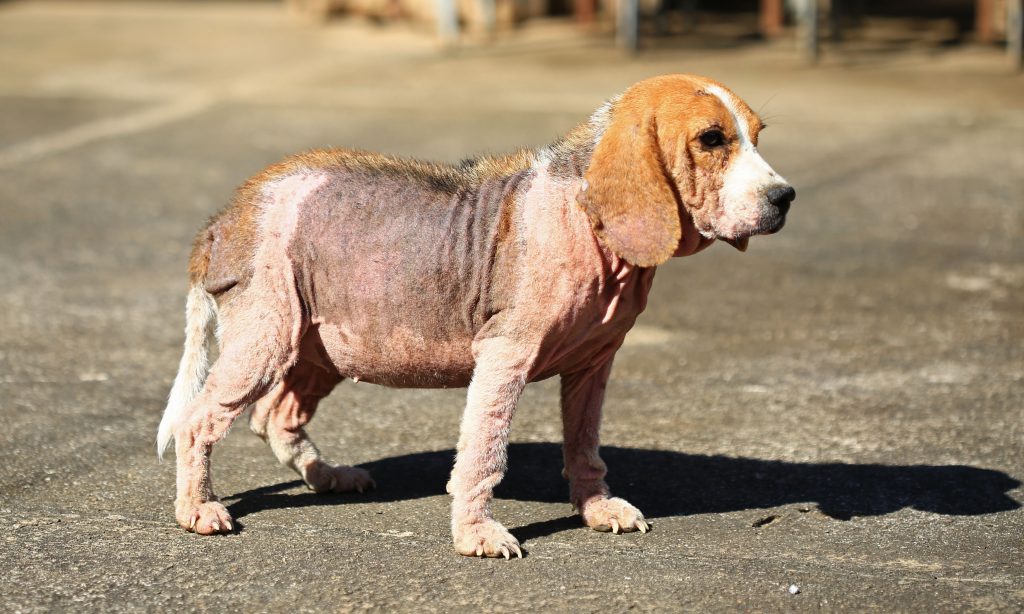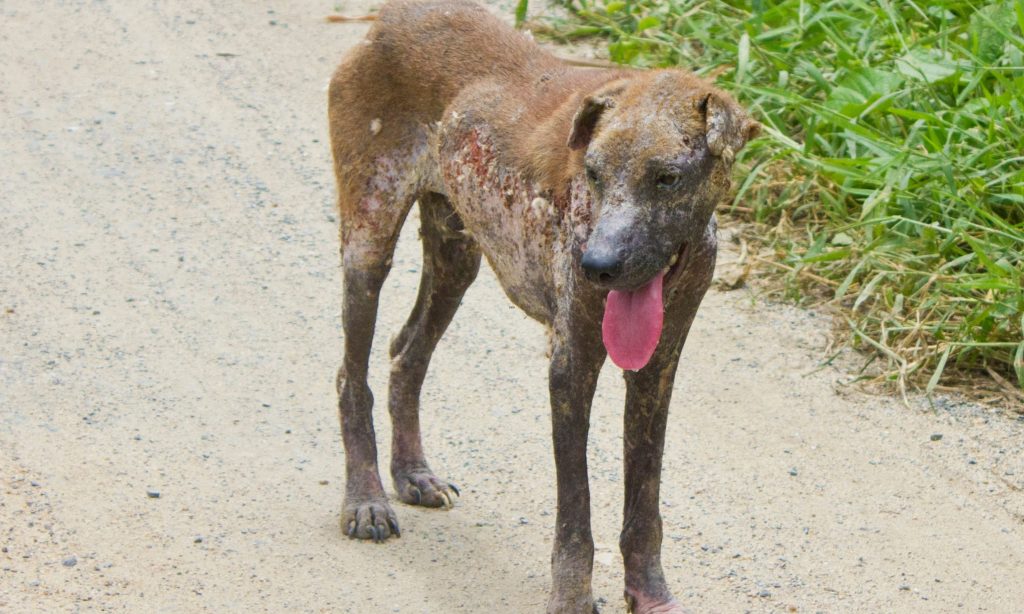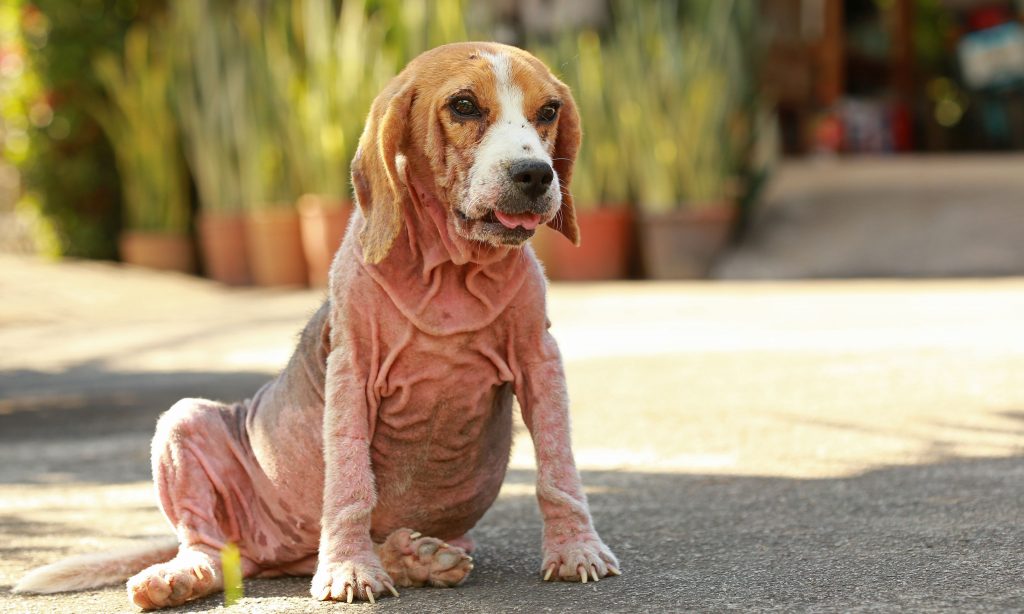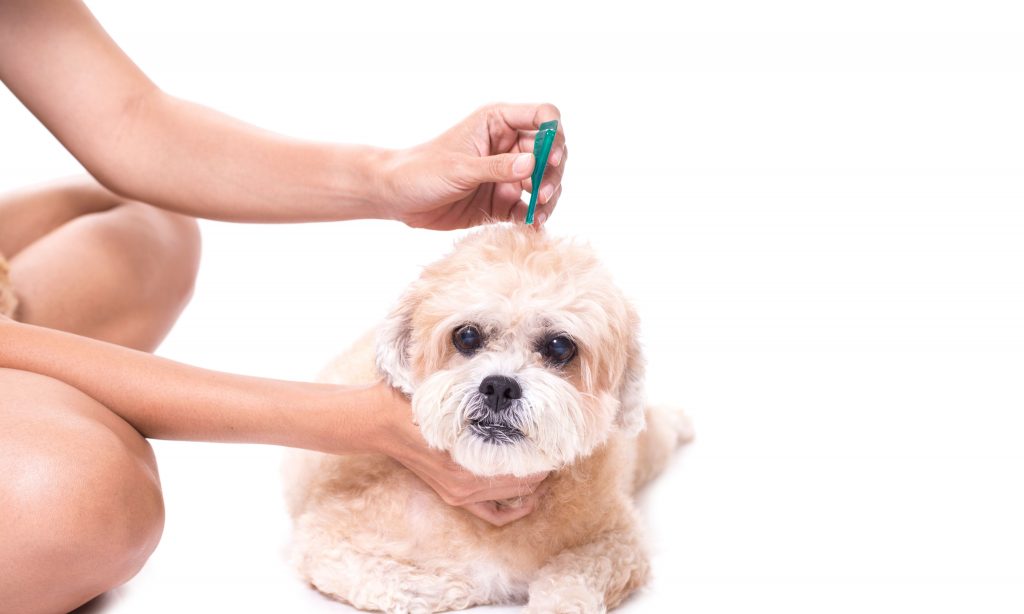The post aims to educate dog parents about demodectic mange, a common skin condition in dogs, including its causes, symptoms, and treatment options. The aim is to raise awareness about this condition, providing accurate and detailed information on how to identify, prevent, and treat demodectic mange.

Demodectic mange, also known as canine demodicosis, is a common skin condition in dogs that is caused by the Demodex mite. These mites are present on the skin of most dogs, but in some cases, an overpopulation can occur, leading to the development of symptoms such as hair loss, itching, and redness. In this blog post, we will discuss the causes, symptoms, and treatment options for demodectic mange in dogs, and provide practical tips on how to prevent and manage this condition.
Causes:
Demodectic mange is caused by the Demodex mite, which is a normal inhabitant of the hair follicles and sebaceous glands of the skin in dogs. In most cases, the immune system of a healthy dog will keep the mite population in check, but in some cases, an overpopulation can occur, leading to the development of symptoms.
Symptoms:
Symptoms of demodectic mange can vary depending on the severity of the infestation, but common symptoms include hair loss, itching, and redness. In severe cases, demodectic mange can also lead to the formation of crusts and pustules. Puppies are more susceptible to demodectic mange, and it’s important to be aware of the signs of the condition in them.
If your dog is showing symptoms of demodectic mange, it is important to consult with a veterinarian. A veterinarian can help to diagnose the condition and recommend appropriate treatment options, which may include topical or oral medications, such as miticides, antibiotics, or immunomodulators, as well as medicated shampoos.

Prevention:
Preventing demodectic mange can be difficult, but providing your dog with a healthy and balanced diet, keeping their living area clean and dry, and maintaining good hygiene can help to reduce the risk of infestation. Also, it’s important to keep an eye on puppies and young dogs and to seek veterinary attention if they show signs of mange.
Conclusion:
Demodectic mange is a common condition in dogs that can cause a variety of symptoms. With proper management and treatment, it can be effectively controlled. If your dog is showing symptoms of demodectic mange, it’s important to consult with a veterinarian as soon as possible. By working closely with a veterinarian and implementing preventative measures, you can help to ensure that your furry companion stays happy and healthy. If you have any questions or concerns about demodectic mange, please reach out to us through our website for further information and support.

Frequently Asked Questions:
What is demodectic mange?
Demodectic mange, also known as canine demodicosis, is a common skin condition in dogs that is caused by the Demodex mite. These mites are present on the skin of most dogs, but in some cases, an overpopulation can occur, leading to the development of symptoms such as hair loss, itching, and redness.
What are the common symptoms of demodectic mange?
Common symptoms of demodectic mange include hair loss, itching, and redness. In severe cases, demodectic mange can also lead to the formation of crusts and pustules.
What causes demodectic mange?
Demodectic mange is caused by the Demodex mite, which is a normal inhabitant of the hair follicles and sebaceous glands of the skin in dogs. In most cases, the immune system of a healthy dog will keep the mite population in check, but in some cases, an overpopulation can occur, leading to the development of symptoms.
How is demodectic mange diagnosed?
Demodectic mange is diagnosed by a veterinarian who will examine your dog’s skin and hair and may take a skin scraping to confirm the presence of mites.
How is demodectic mange treated?
Treatment options for demodectic mange may include topical or oral medications, such as miticides, antibiotics, or immunomodulators, as well as medicated shampoos.
How can I prevent demodectic mange in my dog?
Preventing demodectic mange can be difficult, but providing your dog with a healthy and balanced diet, keeping their living area clean and dry, and maintaining good hygiene can help to reduce the risk of infestation.
Are there any long-term effects of demodectic mange on my dog?
In most cases, demodectic mange is a treatable condition and dogs can make a full recovery with proper treatment. However, in some cases, demodectic mange can lead to secondary bacterial infections or may recur if the underlying cause is not addressed.
Can demodectic mange be passed on to other dogs or humans?
Demodex mites are species-specific, meaning that they cannot infect other animals or humans. However, if your dog has demodectic mange, it’s important to maintain good hygiene and keep their living area clean to prevent the spread of any secondary infections.



